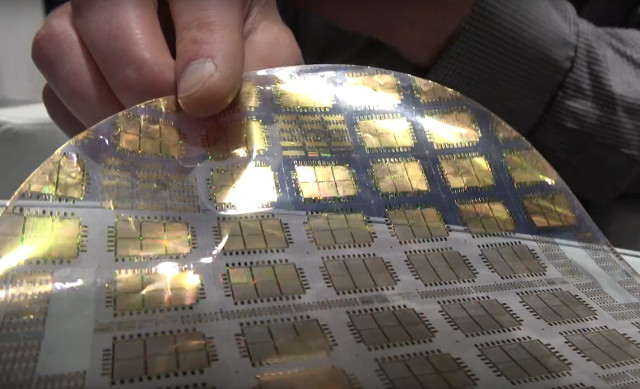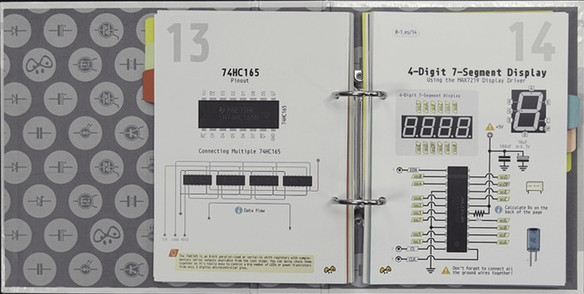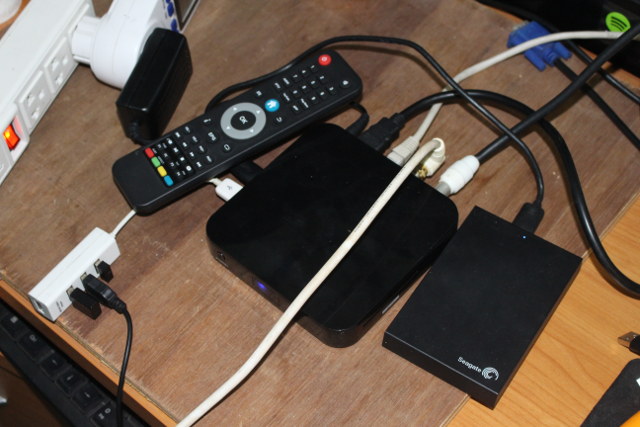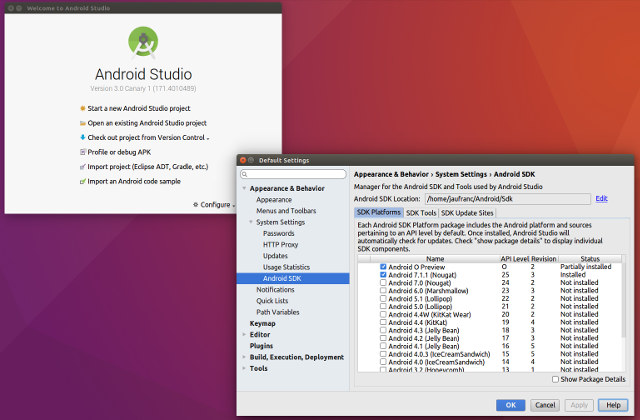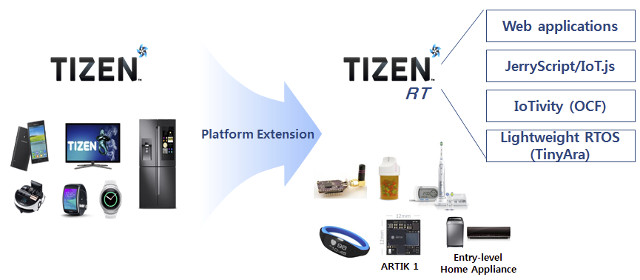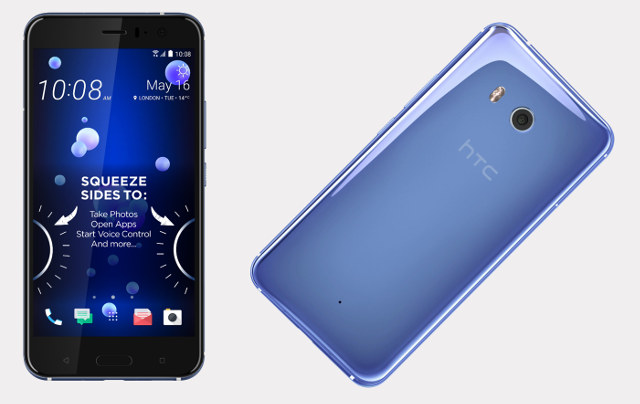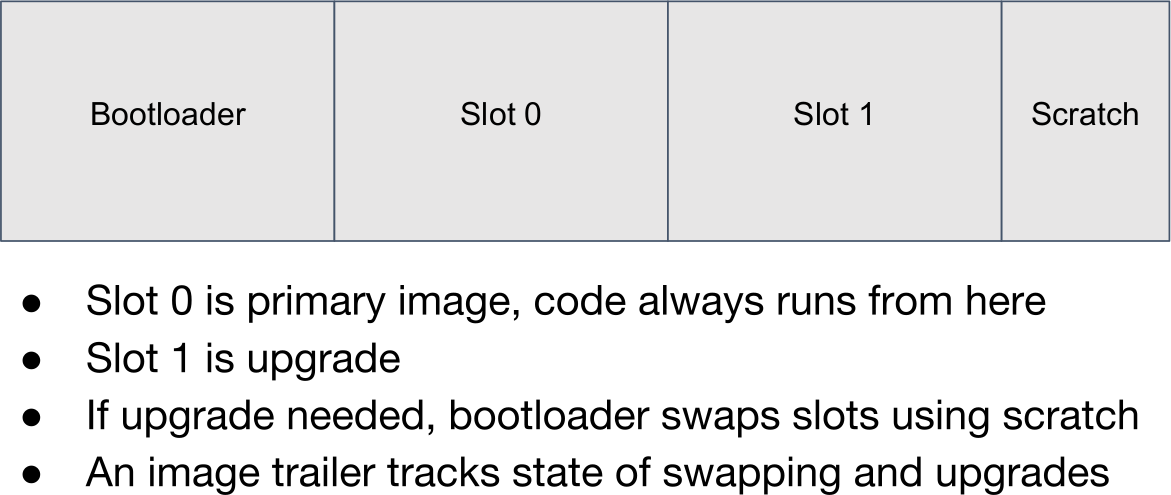Electronics manufacturing now relies on silicon wafers, and it works great for many applications. However, some other applications require or benefit from a cheaper price, thinner circuits, and flexibility, and PragmatIC addresses all those three issues with technology to print electronics circuits on plastic sheets. The technology is said to costs less than 1/10th cost of silicon, with the circuit printed on 10 μm thick flexible plastic “wagers” with support for 10 layers. Circuit starts from basic gates up to ARM Cortex M0/M0+ chip as shown above. Simpler circuits are currently sold for as low as $0.01, but the area for Cortex M0 MCU is 1cm2, and a bit too big for commercial applications, so they plan on shrinking the process to make it commercial viable. ARM is an investor in the company, and PragmatIC is ramping production capacity with the ability to manufacture on billion plastic chips/circuits in 2018. […]
Using GPIOs on NanoPi NEO 2 Board with BakeBit Starter Kit
NanoPi NEO 2 is a tiny 64-bit ARM development board powered by Allwinner H5 processor. FriendlyELEC sent me a couple of NEO 2 samples together with their BakeBit Start Kit with a NanoHat and various modules via GPIOs, analog input or I2C. I’ve already tested both Armbian with Linux 4.11 and Ubuntu Core Qt with Linux 3.10, and ran a few benchmarks on NanoPi NEO 2. You would normally prefer to use the Armbian image with Linux mainline since it provided better performance, but at the time I was told GPIO support was not there. Configuring NanoPi NEO 2 board with BakeBit library So this week-end, when I decided to test GPIO support and BakeBit Starter Kit, I decided to follow this advice, especially nanopi-neo2-ubuntu-core-qte-sd4g-20170329.img.zip image is still the recommended one in the Wiki. So I went with that image. I’ll use Python examples from Bakebit library, but if you […]
ABC: Basic Connections is a Book Listing Common Circuit Diagrams for Arduino Boards (Crowdfunding)
PighiXXX is known for their very useful and pretty pinout diagrams, but they’ve now created a book called “ABC: Basic Connections” comprised of a collection of easy to read circuit diagrams that shows you how to connect various circuits to your Arduino compatible board. The book is in file folder format, so you can easily remove the sheets you need during your project. While you can normally find pretty much whatever circuits you need on the Internet, ABC book’s diagrams looks very neat, and since it comes with 100 A5 pages of circuit diagrams such as LEDs, decoders, shift registers, 7-segment displays, mux/demux, light bulbs, DC motors, solenoids, relays and so on, you may discover circuits you did not know you needed. Every page of the book also comes with a 0-1.es/xx short URL redirecting to an online tutorial for the circuit with information about the theory, component list, tips, […]
Sen5 Amlogic S905D TV Box Review – Part 2: Android Firmware, Kodi 17, and DVB-T2 & S2 App
Sen5 is one of the first Android TV boxes powered by Amlogic S905D processor, and comes with two tuners (DVB-C/T/T2 and DVB-T/T2) with two demodulators that should allow for recording on one tuner, while watching the other, or recording two channels at the same time. We’ve already check out the hardware in the first part of the review, and seen a glimpse of the neat user interface, so today I’ll report about my experience with the device. Sen5 Android Set-Top Box First Boot, Setup Wizard, & First Impressions The STB comes with two USB ports so I used one for the hard drive, a necessity if you plan to use the PVR function, and connected a USB hub to the other with RF dongles for an air mouse and a gamepad, as well as a USB keyboard to take screenshots. I also connected Ethernet and HDMI cables, as well as […]
Android Studio 3.0 Preview Release with Support for Kotlin Programming Language, Android O Preview Images
Most Android apps used to be programmed in Java with the Eclipse IDE, then Google introduced Android Studio in 2013 which has now replaced the latter, and with the release of Android Studio 3.0 Canary 1 preview, the company is now offering developers to program apps using Kotlin language instead of Java. Kotlin programming language is 100% compatible with Java language, and you can even mix Kotlin and Java in your code. Kotlin can make your code much more simple while declaring classes, and it has a few other improvements over Java. Android Studio also include a Java to Kotlin converter. The language has already been used by Expedia, Flipboard, Pinterest, Square, and others. Android Studio 3.0 also brings many other improvement, such as performance profiling tools for the CPU, memory, and networks showing your app performance in real-time, and faster Gradle builds for large sized app projects. Android Studio […]
Samsung Unveils Tizen 4.0 with .NET Framework, Low End IoT Devices Support
We’ve already seen the announcement of Samsung ARTIK 053 WiFi module with Tizen RT this morning, but it appears that Tizen RT (Real Time) is part of a Tizen 4.0 that will add support to IoT devices, as well as introduce changes from the developers’ perspective. Samsung Electronics talked a bit more about Tizen Next (Tizen 4.0) at the Tizen Developer Conference (TDC) 2017 taking in place on May 16-17 in San Francisco. Few details are provided in the press released, but we could learn that “the Tizen 4.0 platform has been extended to Tizen RT (Real-Time) to involve high-end products such as TVs and mobile devices as well as low-end products such as thermostats, scales, bulbs, and more”. Tizen RT page explains that the real-time operating system is designed to run on Cortex M/R MCU with less than 2 MB RAM, less than 16 MB flash, and consists of […]
HTC U11 Android Smartphone Adds “Edge Sense” Squeeze Input, Ranks Best at DxOMark Mobile Camera Benchmark
We’ve come so far in the smartphone market that most hardware releases are rather boring with a processor a little faster, maybe a higher resolution screen and so on, without real exciting innovations. HTC U11 does change that somewhat as the smartphone allows to interaction by squeezing the edges for example to quickly take a picture. The company calls that “Edge Sense” technology. HTC U11 specifications: SoC – Qualcomm Snapdragon 835 octa-core processor @ up to 2.45 GHz System Memory – 4GB / 6GB RAM Storage – 64GB / 128GB flash, micro SD slot up to 2TB (shared with SIM2 slot), flex storage (aka adoptable) supported Display – 5.5″ Quad HD (2560 x 1440 pixels) Super LCD; 3D Corning Gorilla Glass 5 Cellular Connectivity Dual nano SIM 2G/2.5G – GSM/GPRS/EDGE @ 850/900/1800/1900 MHz 3G – UMTS @ 800/900/1900/2100 (B5/B8/B2/B1), HSDPA 42, HSUPA 5.76 4G LTE – Cat 15 LTE up […]
MCUBoot is an Open Source Secure Bootloader for IoT / MCUs
Bootloaders takes care of the initial boot sequence on the hardware before the operating system takes over. For example, U-boot is often used in embedded systems as the bootloader before starting the main operating systems such as Linux or FreeBSD. MCUBoot is also a bootloader, but it targets the IoT, here referring to MCU based systems with limited memory and storage capacity, and is born out of work on Apache Mynewt OS, when developers decided to develop the bootloader separately from the operating system. MCUBoot is designed to run on small & low cost systems running on MCU with ~512 KB flash, ~256 KB RAM, and currently supports Zephyr OS and Mynewt, with support for other RTOS also considered. Due to constraint the bootloader uses minimal features with a flash driver, a single thread, and crypto services. The project also aims at solving security and field firmware updates. To address the […]


